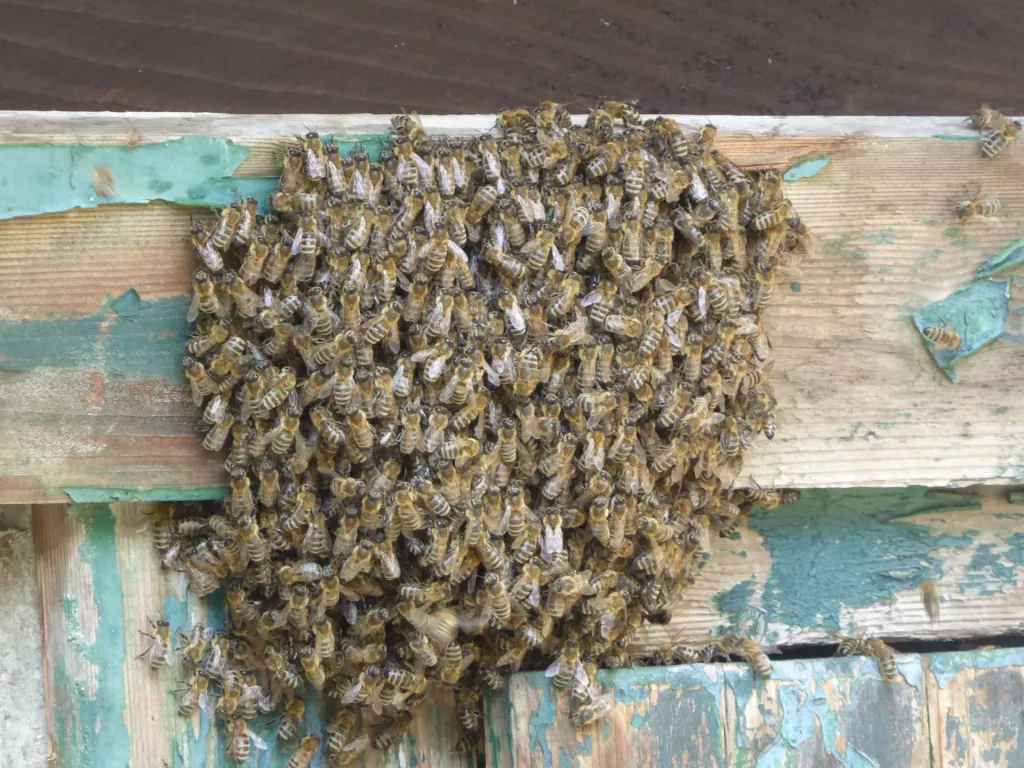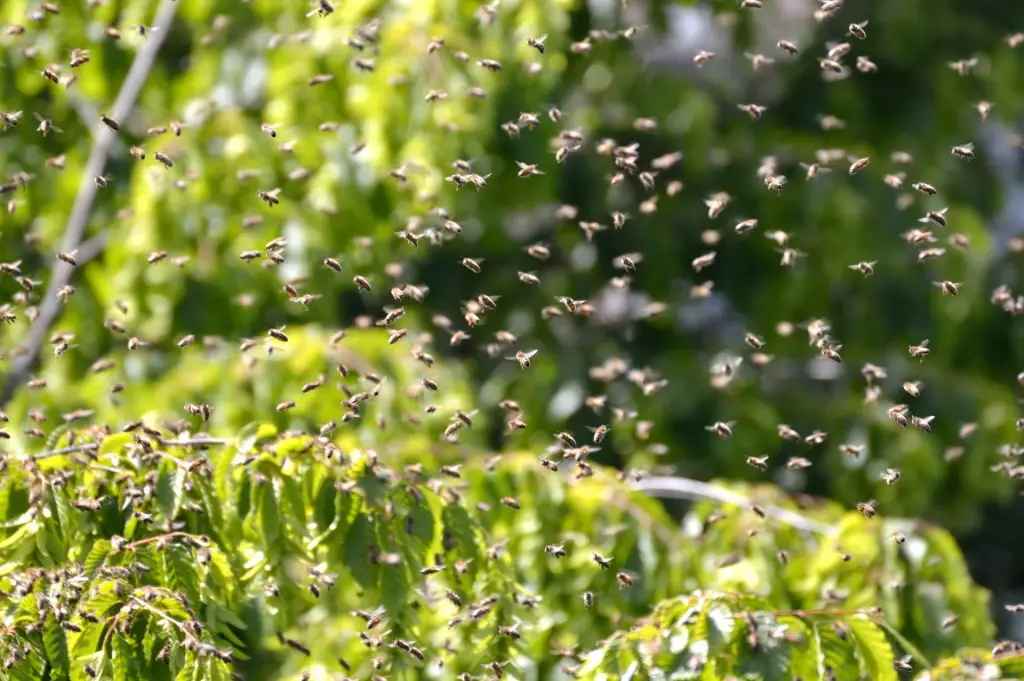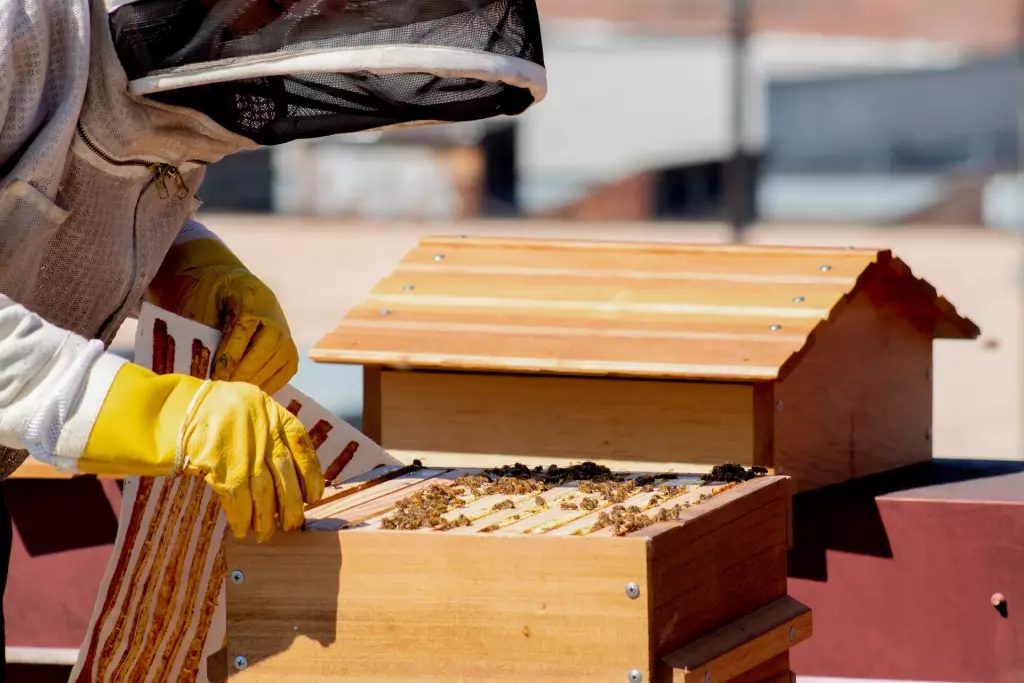Are Bee Swarms Dangerous? - Facts and Fiction Revealed
Honeybees, or Apis mellifera, use a natural habit known as swarming to help their species reproduce in the late spring or early summer. Are these bee swarms dangerous?
Bees that are swarming are not dangerous. They are moving to a new location and have no nest or honey stores to protect, so swarming bees are typically at their most docile. They are not particularly aggressive until they establish a new hive. But these stinging insects will defend themselves if provoked.
The sight of bee swarms may be very unsettling for some, but we need these pollinators for a variety of reasons. Instead of attempting to eliminate them, it's critical to understand swarms and know what to do when you come across one.
Summary
- A swarm of bees is not hostile, but do not provoke the bees to avoid getting stung.
- Swarming behavior is a natural way for bees to reproduce.
- A bee swarm is transient and can stay anywhere for a few minutes to a few days.

On this page:
Swarming Bees Are Not Dangerous—Fact
In most cases, honeybee swarms are not particularly harmful. Instead of attacking people, they are focused on locating a new nest.
Bee swarms are not nearly as defensive as they are around their hive. Since the bees do not yet have a hive to protect, you shouldn't be terrified. These bees are not particularly aggressive until they establish a new hive.
The search for a new hive and maintaining protective clusters around the queen are their main concerns while swarming. This does not imply, however, that bees will not sting if provoked. They are significantly less likely to sting because they are not defending brood or honey stores when swarming.
Before swarming, honeybees gorge on honey to provide energy for the move, which lessens their ability to sting. Swarming bees are less aggressive and unlikely to attack unless threatened.
It may be frightening for some people to witness a swirling swarm of 20,000–30,000 honeybees flying in the air before gathering in a tree limb or on any item. Don't freak out.

If they are not provoked, they will most likely not attack. Beekeepers advise keeping your distance from a swarm of bees to prevent getting stung since they will protect the cluster if disturbed or agitated.
Avoid spraying the bees with water or pesticides. Spraying them might make them sting you.
A Bee Swarm Is Not A Bee Nest—Fact
Many people mistakenly believe that a bee cluster is a group of bees constructing a nest, however, it is not. A bee swarm does not have eggs, larvae, or honeycomb. But a group of bees in a tree with a honeycomb is a nest.
Bee swarms are typically just temporary. If you calmly ignore them, the bees will go in a matter of hours or at most a few days once they find a new home.
Swarms can happen at any time of the year, but they tend to happen more frequently in the late spring and early summer. Swarming occurs when a colony produces a new queen, and so the queen mother of the virgin queen departs from the original colony with a sizable number of worker bees in order to find a new home.
Therefore, in the majority of cases, nothing needs to be done when a honeybee swarm is spotted on a tree or any building structure.
Bee Swarms Don’t Stay In An Area For Long—Fact
Bees that first swarm away from their colony will locate a temporary place while they wait for the other bees to gather. A bee swarm can stay anywhere for a few minutes to a few days.
When a honey bee swarm is discovered on a tree, bush, or building, you usually don't need to take any action. If you patiently ignore swarms, the bees will eventually disperse. From a safe distance, feel free to observe and appreciate the bees, while keeping others away from the swarm.
Swarms In The Wild Are Feral—Fact
A bee swarm that is discovered in a metropolitan area, where there aren't many bee farms nearby, most likely originated from a feral colony and effectively lives in the wild. A feral bee colony must be quite resilient to survive long enough to produce a swarm in the first place.
Feral bees are bees that have developed the necessary coping mechanisms to deal with disease, pests, and significant climatic changes. These genes are important. A swarm of bees is made up of bees from various backgrounds. If they originated from a strong colony, your bees can live for a very long period.
Swarming Can Be Prevented By Enlarging The Hive—Fiction
Swarming cannot be avoided no matter what you do. Although, you should make sure your bees have enough room during the spring and summer.
Swarms can be divided into two categories: overcrowding swarms and reproductive swarms.

Bees must continuously establish new colonies in order to prevent extinction, because a certain percentage of bee colonies will disappear each year owing to illness, predators, cold weather, etc. Therefore, reproductive swarms are essential to the species' existence.
Swarming Only Happens in the Spring—Fiction
People who think that bees only swarm in the spring have obviously not kept bees for very long.
Some honeybees swarm so late in the year that it is almost certain to fail completely. Bees swarm sometimes in September, which is almost the end of the last nectar flow.
Feed your swarming hive lots of 2:1 syrup, using 2 pounds of sugar per pound of water, to build up its winter supplies if it happens to occur late in the year.
If you are unable to capture the swarm, requeen the hive if the new queen is likely to be unable to mate due to the weather. If you manage to catch the swarm, relocate it to a fresh hive and provide food for a few weeks. After that, do a newspaper combine to reunite them with the original colony.
It’s Good To Prevent Swarming—Fiction
A colony's natural goal is to expand and eventually swarm. When the colony is prepared and the queen cells are going to be capped, splits may take place, resulting in nucs.
The queenless colony temporarily going broodless will break the mite cycle. The colony reduction benefits the nuc with the queen by reducing the number of mites.
In the past, beekeepers would wait for their colonies to swarm so they could collect them and start a new colony. It is not natural to kill the queen cells, cut the queen's wings, or make her stay in a hive for a few years. This can lead to unhealthy colonies.
Call an experienced beekeeper, not an exterminator
If a swarm of honey bees is seen, it’s better to call a beekeeper, not an exterminator. It's important to think about contacting a beekeeper first, since if an exterminator or pest controller is called, it can imply that the bees will be eradicated.
If you don't know how to reach a beekeeper, try contacting your local council, a government agency, or the local police first. They have a list of beekeepers in your area.
Consult a local beekeeper or beekeepers' association who are willing to catch swarms. A seasoned beekeeper will have all the necessary knowledge to protect the bees. A beekeeper may happily accept a swarm of honey bees from you and gather and relocate the swarm on your behalf.

Only a few occasions and locations exist where honeybees can be a bother or a nuisance. For those who are susceptible to bee stings, swarms may pose a health risk.
You shouldn't have to take action with a bee swarm unless there is a serious health hazard due to its location, such as in a heavily used public area. Hire an experienced beekeeper to come collect the swarm and relocate it for you.
Why do bees swarm?
Swarming is the method used by honey bee colonies to reproduce and establish new colonies.
A honey bee colony will signal that it is ready to swarm when it outgrows its hive, becomes too congested, or becomes too populous for the queen's pheromones to regulate the entire workforce.
Bee swarms typically occur for two reasons. First, bees can decide that their hive needs more room since they feel cramped in it. As a result, half of the colony may depart and take the queen with them as they search for a new home.
Second, honey bees may swarm if their living environment becomes unsuitable for their survival. Various situations, such as the insufficiency of food supplies, an increase in illness or parasite infestations, frequent disruptions by people or animals, unfavorable weather, inadequate ventilation, or issues with the queen bee might all fall under this category.